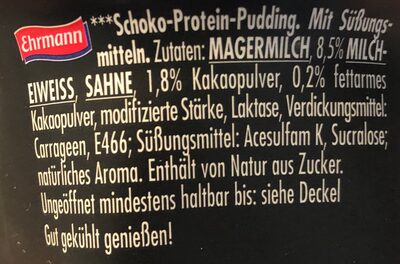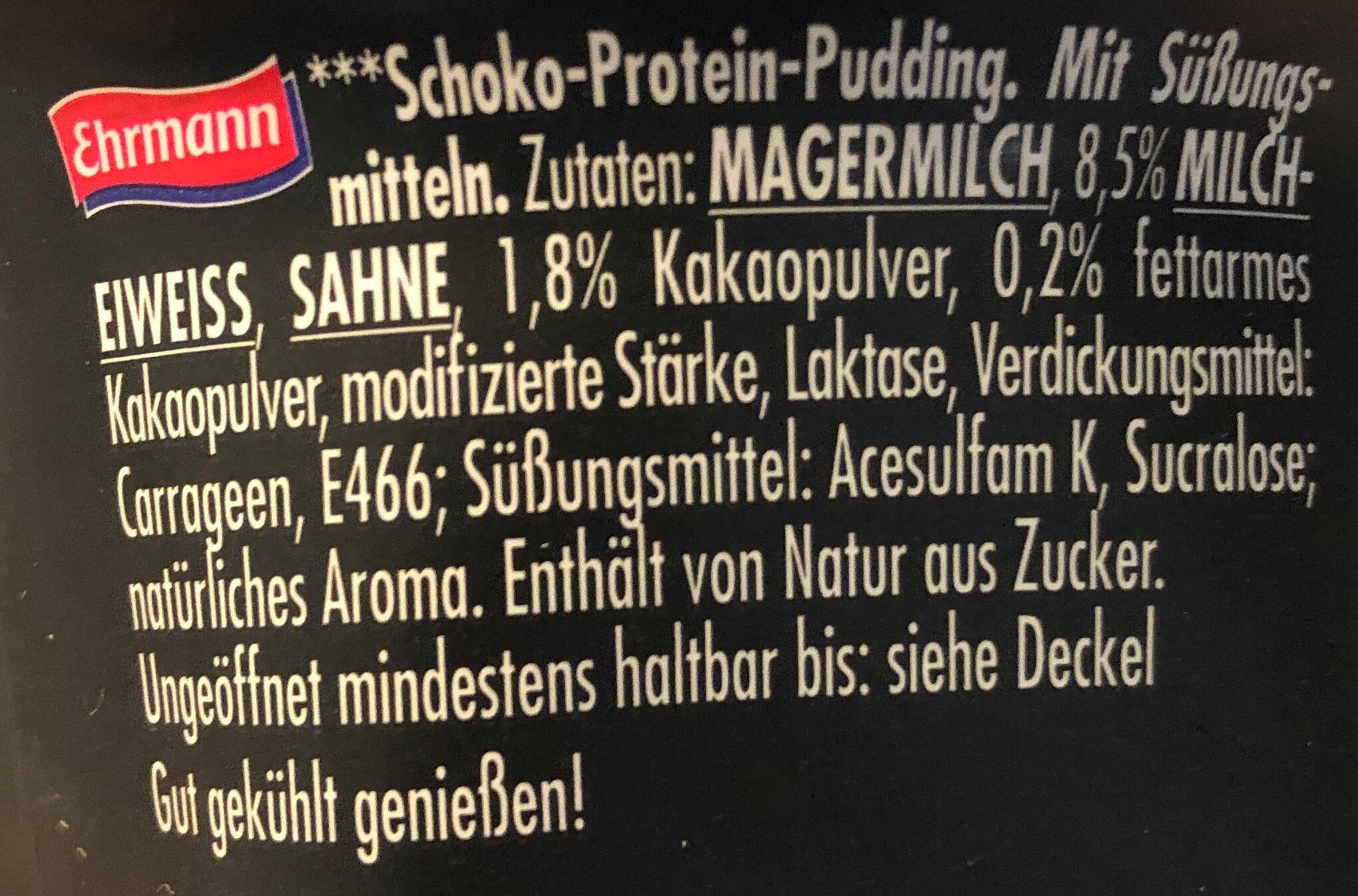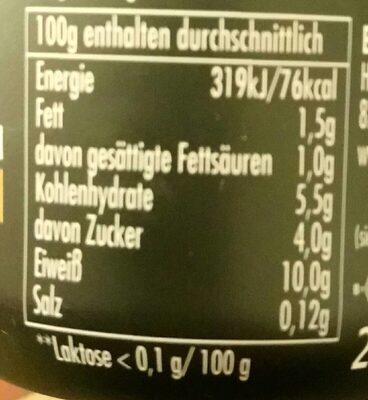Chocolate pudding - Ehrmann - 200 g
This product page is not complete. You can help to complete it by editing it and adding more data from the photos we have, or by taking more photos using the app for Android or iPhone/iPad. Thank you!
×
Barcode: 4002971243703 (EAN / EAN-13)
Quantity: 200 g
Packaging: Plastic, PP 5 - Polypropylene, Aludeckel
Brands: Ehrmann
Categories: Desserts, Puddings, Schokoladenpudding
Labels, certifications, awards: No lactose
Traceability code: DE SN-006 EG, DE BY-77727 EG
Countries where sold: Austria, France, Germany, Luxembourg
Matching with your preferences
Report a problem
Data sources
Product added on by waistline-app
Last edit of product page on by adrianb.
Product page also edited by bassel777, bredowmax, charlesnepote, choosebetter, date-limite-app, ddhbend, dkolev, ecoscore-impact-estimator, grumpf, halal-app-chakib, inf, kiliweb, livlakaemper, omnomnotes-app, openfoodfacts-contributors, packbot, prepperapp, professordoc, roboto-app, rochus, rsoe, scanbot, teolemon, waistline.b4c92be0-20c3-4b6a-b9df-f685e0a6789f, yuka.KJdkLvqwBeUhA_H0i7Im0j2kNfa4Gdt4PSUMoQ, yuka.UXJBeUxwc0dqUEFMcDhZNjNCTFE0ZEZiNE1MNFEzam5MdHN3SUE9PQ, yuka.sY2b0xO6T85zoF3NwEKvlhVKWYvCvAKaKRnvoVOJy_TUFq7Me8hz8oWrC6s, yuka.sY2b0xO6T85zoF3NwEKvlm9Df_vsvhSVGjnusk-CmdS0H7Pwft9T_YX7aas, yuka.sY2b0xO6T85zoF3NwEKvlmBMbOvCrAufMiXvxRGz7dqVM5uxTuhyx4zbP6s.











